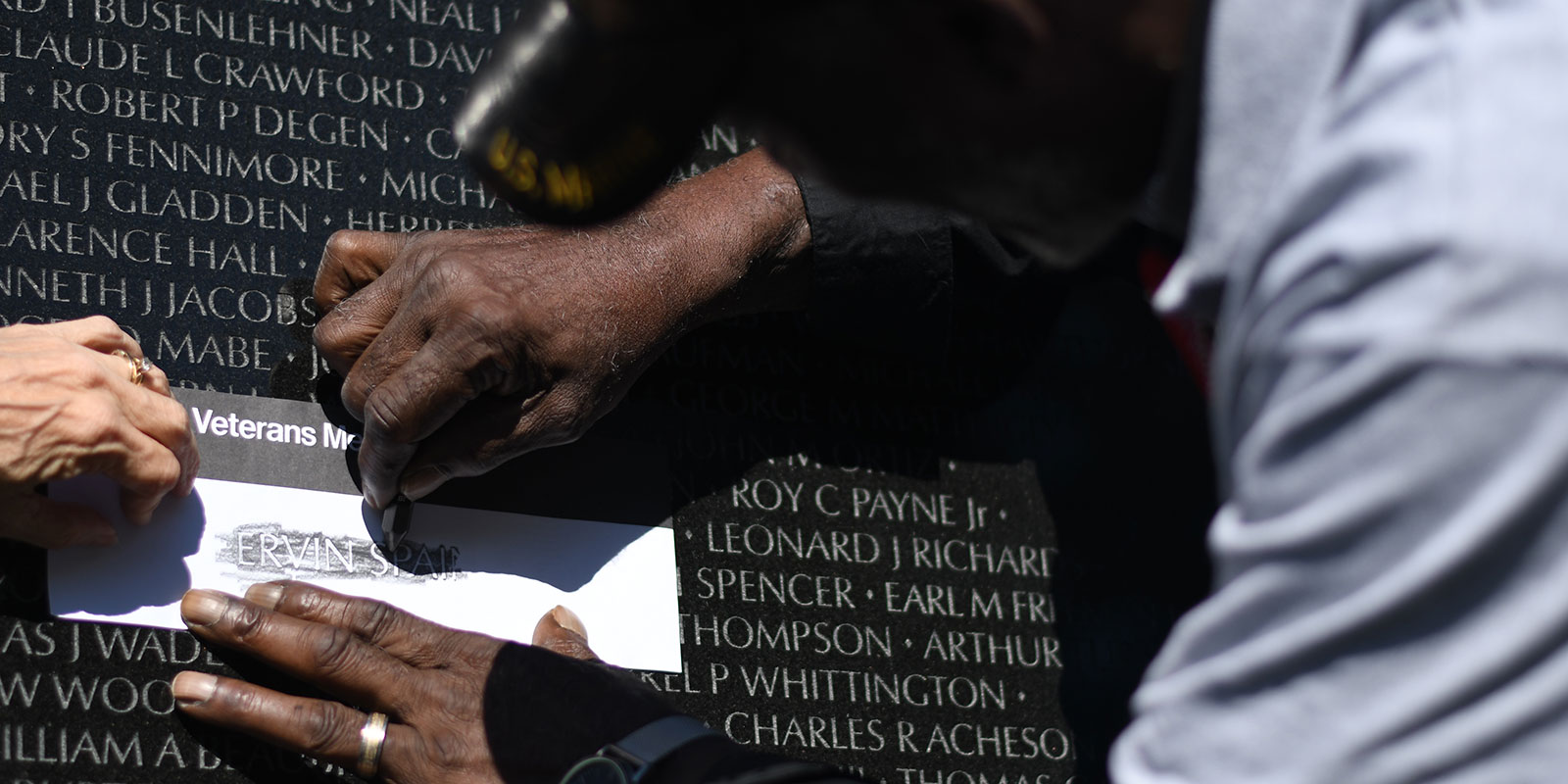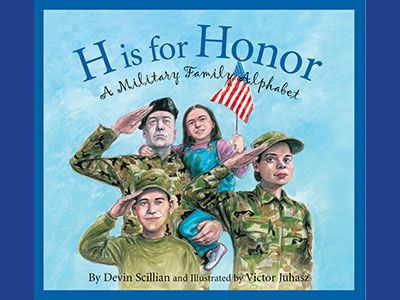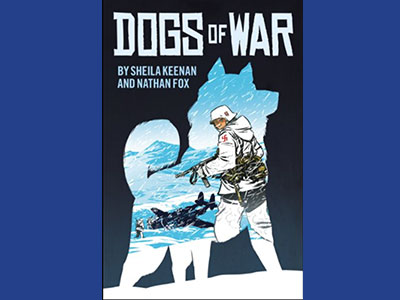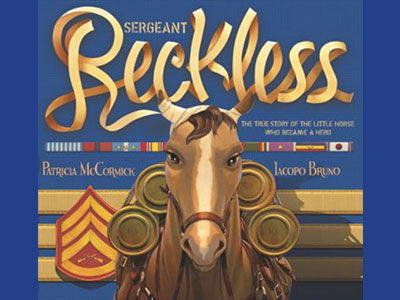Honor Flight Chicago’s Operation Education prides itself on working with schools to help determine how to best support their goals while also expressing gratitude toward our senior war heroes. We are proud to have honored thousands of veterans who served during WWII, the Korean War and Vietnam. These veterans are our greatest resource and they are eager to share their stories.
Veterans in the Classroom
Operation Education offers unique resources for educators and an invaluable forum for sharing ideas:
- CONNECT students to veterans in their community.
- EDUCATE students through the living history, life experience and example of veterans.
- INSPIRE both your students and our veterans to the importance of service and gratitude.
We encourage you to access Operation Education as a resource to celebrate Veterans, to support your curriculum, and to offer impactful in person experiences for your students throughout the school year. Fill out this form to let us know how Operation Education can work with your classroom, your school or your community.
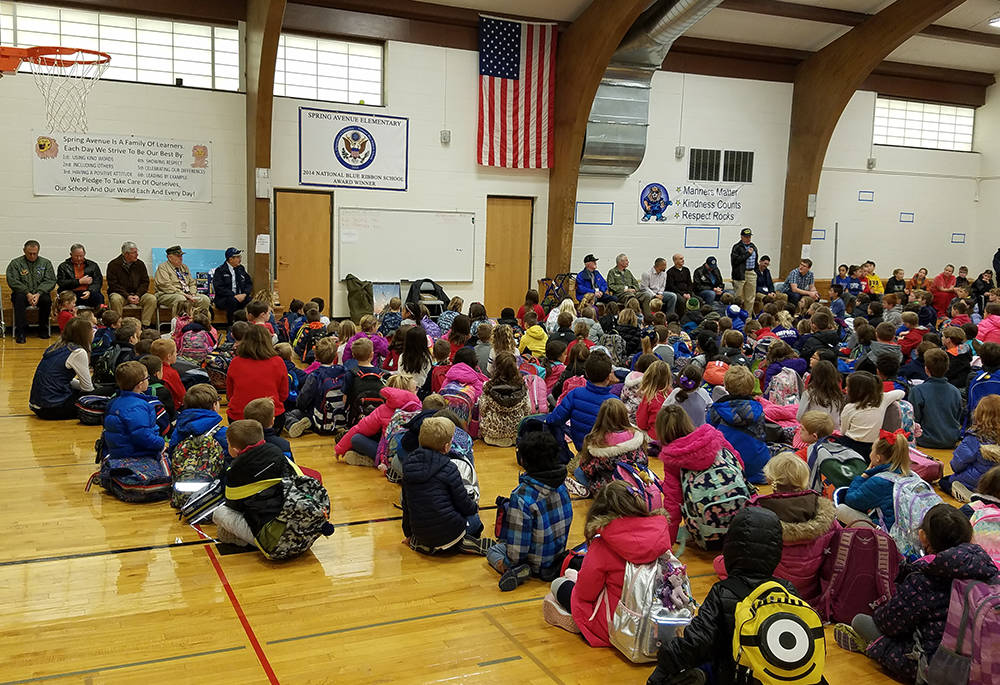
Operation Education Content Calendar
The Operation Education volunteer team curated theme-based packages of content that teachers can use throughout the school year to highlight senior war veterans and recognize their service and sacrifice.
Every year around January 27, the United Nations Educational, Scientific and Cultural Organization (UNESCO) pays tribute to the memory of the victims of the Holocaust and reaffirms its unwavering commitment to counter antisemitism, racism, and other forms of intolerance that may lead to group-targeted violence. The date marks the anniversary of the liberation of the Nazi Concentration and Extermination Camp of Auschwitz-Birkenau by Soviet troops on Jan. 27, 1945. It was officially proclaimed, in November of 2005, International Day of Commemoration in Memory of the Victims of the Holocaust by the United Nations General Assembly.
We are proud to bring you the below information highlighting Honor Flight Chicago alumni who had varying experiences directly connected to the Holocaust.
For Black History Month, Honor Flight Chicago is proud to share the following stories of African-American veterans, featuring World War II and including all of the eras we serve. We are proud to have been able to honor their service. We hope that in sharing these stories we inspire you to learn more about their history.
Random Acts of Kindness (RAK) Week is the perfect time to perform a Random Act of Kindness for veterans in your community!
For Women’s History Month, Honor Flight Chicago is proud to share the following stories of woman veterans. We are proud to have flown hundreds of women heroes on their Day of Honor during our history. We hope that in sharing these stories we inspire you to learn more about their history.
In observation of Vietnam Veterans Day in 2021, 11 of our Vietnam War veterans participated in a Q&A with high school students from our Operation CLIMB, a branch of Honor Flight Chicago’s Operation Education. We believe one of the best ways to honor our heroes is to share their stories and experiences, inspiring future generations to learn about the service and sacrifice of our veterans.
Access this video and additional Vietnam War-related content by clicking the button below.
National Former Prisoner of War Recognition Day is a day to honor captured wartime service members who eventually came home. It is observed annually on April 9th, and commemorates the surrender of between 60,000 and 80,000 US and Filipino service members to the Imperial Japanese army at the Bataan Peninsula, Philippines in 1942.
Asian Americans and Pacific Islanders are the fastest growing racial group in the United States, according to history.com. AAPI Heritage Month celebrates AAPI immigrants and citizens in the United States and their unique life experiences, traditions and cultures.
On May 8, 1945 Germany unconditionally surrendered its military forces to the Allies. On that day celebrations erupted around the world to mark the end of World War II in Europe. This day is known as Victory in Europe Day or VE Day.
The Second Continental Congress established the Army June 14, 1775; it is the oldest service of the United States military. Originally formed to protect the freedom of the first 13 colonies, the Army has evolved and grown from this small militia into a powerful fighting force. We hope the stories below inspire you to dig deeper and learn more about the history and importance of the United States Army.
Purple Heart Appreciation Day is observed on August 7th and is a time to remember and honor the brave men and women who were recipients of The Purple Heart. The Purple Heart, in general, may be awarded to members of the Armed Forces who have been wounded, killed in action, or have died or may die from wounds received in any action against the United States.
Each year, Americans observe National Hispanic Heritage Month from September 15 to October 15, by celebrating the histories, cultures and contributions of American citizens whose ancestors came from Spain, Mexico, the Caribbean and Central and South America. Honor Flight Chicago is proud to share the stories of these Hispanic American veterans we have honored. With stories spanning World War II, the Korean War, and the Vietnam War they represent the dedication, service and sacrifice of our Hispanic Americans veterans.
The National Security Act of 1947 established the United States Air Force as a separate military branch. The Signal Corps was established as the first aeronautical force in the United States, becoming an official branch of the Army in 1863. They provided visual communications from aerial balloons during the Civil War. The United States Air Force is now the second youngest branch of United States. We hope the stories below inspire you to dig deeper and learn more about the history of the United States Air Force.
The United States Navy was established on October 13, 1775, with a small fleet of ships to stop British supply ships. Centuries later it has expanded to the largest fleet in the world with hundreds of ships ready to serve globally. We at Honor Flight Chicago are proud to get to honor our Navy veterans on every mission to Washington, D.C. To help celebrate the Navy’s birthday, we are proud to bring specific stories to you from several of our World War II Navy veterans. These heroes served in important battles and were witnesses to history. We hope their stories inspire you to dig deeper and learn more about the history and importance of the Navy.
On November 10, 1775, two battalions of Continental Marines were formed in Philadelphia during the American Revolution to serve as a branch of troops capable of fighting on land or at sea. The Marine Corps joined the Department of the Navy in 1834 and has been instrumental in some of the most iconic battles in American history. We hope the stories below inspire you to dig deeper and learn more about the history and importance of the United State Marine Corps.
Every Veteran that flies on Honor Flight gets an envelope full of letters from their family and friends, the community, and from students. Mail Call is one of the most memorable parts of their day. Find out how you can participate in this inspirational experience.
On December 7, 1941, Japan attacked Naval Station Pearl Harbor and drew the United States into World War II. More than 80 years later, we look back on the experience with educational resources.



Veteran Interviews
It’s one thing for students to read online about something that happened during World War II or the Vietnam War — it’s another thing altogether for those students to be able to hear first-hand experiences from senior war veterans. Our Operation Education team compiled more than 50 video interviews with veterans about their lives and service. These, as well as interviews from our “Honor. Thank. Inspire.” podcast are all available for teachers to leverage in the classroom.
Click the button below to access our database that lists each veteran interviewed, as well as the war they served in, their branch of military, whether their story is captured on video, via podcast, or written, and much more! Alternatively, learn a bit about each interview in the section below the database button, which is organized by war. Sample videos can also be found below.
Veteran Interviews Case Study
Discover how social studies teachers at one Chicago area middle school used Operation Education’s video interviews to create a lesson plan centered around human interaction.
Click the link after each person’s bio to be directed to their video and/or podcast interview.
- WWII Army Veteran Irv Abramson talks about his service in the European Theatre, including being severely wounded during the Battle of the Bulge. Irv discusses his struggle with PTSD and how he finally revealed his war experiences to his family because of an assignment his daughter completed for high school. (Podcast)
- Wallace Alcorn dropped out of high school to join the Naval Reserve so he could be a part of WWII, then was drafted into the Army during the Korean War. After he completed seminary, he continued to serve for 28 more years as an Army chaplain. (Video)
- Through 41 missions over Germany during WWII, George Behling, Jr., escorted bombers in his P-51 Mustang and safely returned home. During the 42nd, however, his engine failed — forcing the 20-year-old to land in enemy territory and to take what he calls “the hard way home.” (Podcast)
- Curtis Bentley served in the Navy during WWII, supervising land-based mess operations during the Battle of Okinawa and later serving as an ammo bearer during the iconic engagement. (Video)
- Walt Bergonthal served during WWII with the Army Air Corps, attached to the 133rd AACS (Army Communications Systems). (Video)
- WWII veteran Bernie Bluestein was an art student in 1943 when he saw an Army recruiting flyer posted on the bulletin board at school looking for artists to form a new outfit. He ended up as part of a unit so secret that his escapades in Europe remained classified for nearly 50 years! Now free to tell his story, hear his fascinating tale of serving with the US Army’s 23rd Headquarters Special Troops — the “Ghost Army” — deployed successfully along the Rhine river. (Podcast)
- WWII Navy veteran Joe Borst, a Fireman 2nd Class who was aboard the USS St. Lo when it became the first major warship to sink after a direct hit from a Japanese kamikaze attack during the Battle of Leyte Gulf. (Podcast)
- As an Army field medic throughout the Battle of the Bulge, Staff Sergeant Peter Broustis saw firsthand the brutal realities of war. For his courage under fire, he received a Bronze Star. And yet, it was the atrocities he witnessed as part of the liberation force at Dachau that truly shocked him. As Peter says, “I saw man’s inhumanity to man.” (Podcast)
- Ray Brown served in the Army Air Corps during WWII. He flew 14 missions out of Italy as an aerial gunner, and was shot down on June 7, 1944. He was a POW at Stalag 4 and walked 630 miles after his liberation on April 26, 1945. (Video)
- WWII Navy Seaman Marion Burns discusses his time aboard the USS Franklin, a ship which withstood multiple attacks including a direct bombing hit in March of 1945 that resulted in the loss of more than 800 of his fellow sailors. Burns’ powerful story includes his ongoing struggle with PTSD and the impact his Honor Flight Chicago experience had on him. (Podcast)
- Army Corporal Jim Castellano served with the 430th AAA Bal. Battery B, a heavy artillery unit throughout Europe during World War II. He landed on Omaha Beach on D-Day Plus 3. (Video)
- Mel Copeland loves his country so much, he kissed the ground he walked on when he returned home from war during WWII. He wanted to serve his nation as a paratrooper or a pilot, but was quite literally too tall to fly — so he became a ground crew member of the famed Tuskegee Airmen. In this first season finale of our Honor. Thank. Inspire. podcast, Mel’s wisdom and deeply respectful approach to life shine through with a message that’s as timeless as it is timely. (Podcast)
- On Dec. 7, 1941, Navy Chief Yeoman James C. Dewitt‘s ship, the USS Antares, was towing a barge into Pearl Harbor in the pre-dawn hours. As they approached the harbor in search of the ship they were to transfer the barge to, they detected a submarine following the Antares. Since they were an unarmed ship, they received help from the destroyer USS Ward who located and sank the Japanese submarine. It became obvious this was a genuine attack and they notified central command. Soon after James and his shipmates were eyewitnesses to the attack on Pearl Harbor. Japanese planes began strafing the Antares as everyone was ordered below deck. Only one sailor on the Antares was injured in the attack, receiving the Purple Heart. Today, at 100 years of age and on the 80th anniversary of the attack, James still remembers the “Day Of Infamy” very well. He feels that his ship and crew do not get the recognition for their part in this historic event and enjoys sharing his story. “As long as someone wants to hear it, I’ll keep telling it,” he said. “A lot of young people don’t know anything about it. And I enjoy talking to people.” (Video)
- Len Dora served three years in the Army during WWII in the Pacific Theatre. (Video)
- Army Tech 5 Weyman Edwards served throughout Europe during World War II including at Monte Cassino and Fort Lucky Strike. (Video)
- Willie Ferba served as a Truck Driver in Japan during World War II. His service during the war was just the beginning of a lifetime of service to his community that continues to this day. (Video)
- Navy First Lieutenant Clelia Ginay served as an ICU nurse during World War II. (Video)
- WWII Army Air Corps First Lieutenant Alvin Goodman, Jr., flew 11 successful missions as a B-24 Bomber pilot before, while serving as co-pilot on his 12th, he was hit by flak and knocked out cold in the cockpit. In this episode of Honor. Thank. Inspire., Goodman describes the relatively little training pilots received before being thrown into combat, and his road to recovery after being wounded in midair. Goodman remained a flyer throughout his life, logging 25,000 hours of flight time during his career. (Podcast)
- Dr. David Grauer, DDS, joined the Navy late in WWII thanks to the urging of his father. After not seeing combat, he felt his military experience was not worthy of inclusion on an Honor Flight Chicago mission. For a man whose service to his country and his community extends from his time in uniform all the way into his 10th decade of life, he could not have been more mistaken. (Podcast)
- Charlie Hartley was a Corporal in the Army Corps of Engineers during WWII in the Pacific as a member of the occupation force in Japan. (Video)
- Howard Hill served in the Navy during WWII, spending two years about an aircraft carrier. (Video + Podcast)
- Army Air Corps Corporal Paul Hill served as an armament technician for B-24, B-29 and prop planes during World War II. (Video)
- During the Battle of the Bulge in the Ardennes, Army PFC Dick Idstein was wounded. The surgeon who operated on him asked “Do you want the bullet?” Dick said yes — and promptly sent the bullet home to his mother. That act preserved a tangible piece of history from the famous battle, and Dick used it during his career as a grade school teacher to illustrate the realities of war for his students. (Podcast)
- Navy Lieutenant Gladys Klauke served as a Navy Nurse during World War II. She recently celebrated her 100th birthday. (Video)
- Howard Levinson grew up in extreme poverty in Chicago and from a very young age experienced rampant anti-Semitism. He dreamed to fly, pushing through the obstacles of resources and ignorance to become a B-24 pilot in the Pacific at the tender age of 21. Though his crew feared he would be a “coward” because of his Jewish religion, he taught them a lesson in heroism they would never forget. Howard has continued to teach his entire life, including 75 years as a flight instructor. (Podcast)
- Army Air Corps Corporal Fred Maravilla served as a teletype operator and interpreter in Italy and Germany during World War II. He is a Mexican immigrant who got his U.S. citizenship during basic training, and went on to teach English to immigrants after the war. (Video)
- John Milton served in the Navy and was stationed at Pearl Harbor in the latter stages of WWII. He and his best friend — stationed onboard a ship in the Atlantic — wrote letters to each other. This exchange led to a tradition of letter writing in John’s family with his seven grandchildren, which he discusses at length in this interview. (Video)
- Mike Nussbaum is a World War II Army Veteran who served from 1943-46. His assignments included being chief of the message center for General Eisenhower; Nussbaum dispatched the official notification of Germany’s surrender on VE Day. He now is a professional actor on stage and screen, and is still working deep into his 90s. (Video)
- Army Air Corps 1st Lieutenant Elliot Rosenberg served as a B-24 pilot completing 35 combat missions during World War II. He was awarded the Air Medal with 3 Oak Leaf Clusters and the Distinguished Flying Cross. (Video)
- WWII veteran Hank Roberson was drafted into the Army from his home in the segregated south. He arrived in Normandy one week after D-Day assigned to the 957th Quartermaster supply company — part of what would become known as the vital “Red Ball Express” supply chain. In this timely episode, Roberson discusses being confined to a non-combat role because of racial barriers, his reaction to black soldiers like himself finally being allowed to fight during the Battle of the Bulge, and his experiences with discrimination during and after the war. (Podcast)
- Bill Shoop served as a teletype operator during the latter stages of World War II in Europe, first during the Battle of Bulge and later from the International Military Tribunal known as the Nuremberg Trials. Though he claims no special role in the Trials — “I just happened to be there,” he says — Bill Shoop was quite literally a witness to history and we are proud to tell his story. (Podcast)
- Dr. Paul Thomas served in the Army Air Corps during WWII. (Video)
- WWII Navy Veteran John Ullinskey discusses his involvement in D-Day and the Battle of Okinawa and everything in between: including his reaction to VJ Day and getting to meet the Pope! (Podcast)
- Jay Vandiver served from 1943-46 in the Army during WWII. He was part of the second wave of D-Day, and participated in the liberation of Dachau concentration camp. (Video)
- Bill Wagner was a Ships Cook Third Class in the Navy on the U.S.S. Yosemite all throughout the Pacific during WWII. (Video)
- In the absolute chaos that was Omaha Beach on D-Day, 20-year-old Ray Wagner found himself twice thrown into the water before scrambling onto the sand, death and destruction all around. He himself was wounded on that beach, but less than a month later he was back with his field artillery unit as they worked their way through Belgium, Holland, France and Germany — where his unit came upon the Nazi concentration camp at Dachau. Irascible and with language as salty as the water he was thrown into, Ray Wagner brings D-Day and the end of the war in Europe to vivid life in our 25th episode. (Podcast)
- Army Air Corps Corporal Bob Weiner served as a ground control radar operator in Alaska during World War II and the Korean War. (Video)
- Staff Sergeant Harold Weir was struck eight times by enemy fire in 1944, but survived his wounds, subsequent capture, and five months as a POW in the infamous Stalag 17. Harold returned home after WWII and for decades stoically endured mental and physical pain that often left him unable to sleep through the night. In 2011 — accompanied by his daughter, Donna — SSgt Weir traveled with Honor Flight Chicago to Washington, D.C., for an experience that proved to be life changing for all involved. (Podcast)
- Bob Wilcox landed on Omaha Beach on June 6, 1944: D-Day. He survived the landing only to be cut down on “Bloody Hill” near La Haye-du-Puits one month later. After nearly a year in the hospital, Bob came home to focus on family and his career as a notable optician prior to his passing in 2020. In this unique episode, Bob’s daughter Jeanny Shotas’ remembrances of her father are interwoven with Bob’s own words from an earlier interview. (Podcast)
- Emery Wolf served in the Army during WWII as a replacement troop during the occupation of Germany. (Video)
- Army SSgt Bill Zamzow served in chemical warfare during World War II, working to apply agents to clothing to prevent injury to service members throughout the Pacific theatre. (Video)
Click the link after each person’s bio to be directed to their video and/or podcast interview.
- Wallace Alcorn dropped out of high school to join the Naval Reserve so he could be a part of WWII, then was drafted into the Army during the Korean War. After he completed seminary, he continued to serve for 28 more years as an Army chaplain. (Video)
- Army Corporal Morris Allen served with an artillery unit during the Korean War. (Video)
- Elaine Ansbro has had a fascination with flying and aviation since she was a young girl. With that in mind, she joined the Air Force during the Korean War in the hopes of taking wing. She soon found out she was too tall at 5-foot-8 to serve aboard aircraft, and instead learned a new skill she still has to this day: writing backward. Find out how that job aided the war effort, and experience Elaine’s love of singing. (Podcast)
- Kris Artz served with the Air Force as a statistical specialist at Headquarters Strategic Command, Offutt AFB during the Korean War. (Video)
- Army Corporal Rich Bernier served “many months” on the front lines of the Korean War. One day, the bunker he had just left took a direct hit from a mortar, killing all inside. Rich received serious shrapnel wounds, recovered and came home. It was not until he and his son, Rick, traveled together on an Honor Flight Chicago mission to Washington, D.C., in 2016 that his family heard his battlefield tales. (Podcast)
- Army Major General Clifton Capp entered the Illinois National Guard in 1948 before receiving a direct commission as a second lieutenant and serving on active duty during the Korean War. Upon discharge he joined the 85th Division (Army Reserve) and retired in 1983 having risen to the rank of Major General as commander of the 416th Engineer Command. (Video)
- Andy Carillo is a Korean War veteran who served in the Navy. (Video)
- A/1C Amelia Cunningham served in the Air Force during the Korean War as morning report clerk and personnel specialist in the United States. (Video)
- During high school, Bob Healy enlisted in the Marine Corps reserves. Soon after, Corporal Healy found himself on the other side of the world in the thick of the frozen Chosin Reservoir campaign — one of the most brutal battles in the history of modern warfare. Hear his story of survival as one of the Korean War’s “Chosin Few.” (Podcast)
- Korean War veteran Bob Guilfoyle paints a picture of what it was like to serve in the Korean War. This proud Marine battled the Chinese, the cold and the wildlife as a forward observer in what he firmly believes was his patriotic duty. This episode features several light-hearted tales as well as a story about the stark realities of war. It also includes a chance meeting so incredible it must be heard to be believed! (Podcast)
- Army Sgt Ken Hirata served in engineering and maintenance during the Korean War. As a teenager during WWII, he and his Japanese-American family were sent to internment camps. (Video + Podcast)
- Army Corporal Don Klein served as a cook and a baker during the Korean War. (Video)
- Army private Bill Lederer served as a schoolteacher for soldiers in Germany during the Korean War. After the war he went on to teach classes at Statesville prison. (Video)
- Air Force A1C Ted Manuel served as part of a special testing detachment in the U.S. and Japan during the Korean War. He experienced and discusses the segregation and military prejudice of the armed forces at that time. (Video)
- Marine Corps Veteran Jerry Sperry received two Purple Heart medals for his service in the Korean War. The first came in South Korea, while the second came during the frozen Battle of Chosin Reservoir in the North. Now in his 90s, Jerry’s current mission is to educate future generations about the “Chosin Few” who fought that battle. (Podcast)
- Army Corporal Ray W. Stoddard served as an infantry squad leader with F Company, 291st Regiment, 75th Division throughout European Theatre from 1943-46. (Video)
- Army Air Corps Corporal Bob Weiner served as a ground control radar operator in Alaska during World War II and the Korean War. (Video)
Click the link after each person’s bio to be directed to their video and/or podcast interview.
- Air Force E5 Kay Ann Akins served in supply during the Vietnam War, stationed in both the United States and Taiwan. She went on to further serve in the Illinois Air National Guard, retiring as an E8. (Video)
- Honor Flight Chicago alum Danny Anderson hails from Gardner, Illinois. A town of 1,400 that sits 60 miles southwest of Chicago in Grundy county, Gardner saw five of its young men not return home from Vietnam. Danny himself was wounded there. He and longtime friends Earl Fatlan and Gary Kociss — also Vietnam veterans — sat down with Paul Meincke to discuss their experiences. (Podcast)
- Mary Arvidson served in the Army beginning in 1973 and then in the Navy until her retirement as a Master Chief Petty Officer in 2012. She performed intelligence work and was stationed in both Germany and England. (Video)
- Ronald Baltierra served as a sniper in Vietnam, an assignment so difficult mentally that he failed to pull the trigger the first time he was ordered to do so. He eventually came to understand that as hard as it was to knowingly take a life, he was saving countless more in that brutal war with his actions. (Podcast)
- Marine S/Sgt Terry Blue served as an infantryman, rifleman, and with military intelligence during the Vietnam War. Army E3 Robert Gurley served in the infantry during the Vietnam War. Blue and Gurley are childhood friends who remain close to this day. (Video)
- Lew Bottando describes himself as lucky. He has been married 50 years to his high school sweetheart, and retired from a long career in the Chicago Fire Department as a battalion chief. His luck began, however, before all of that: he came home alive from the jungles of Vietnam after earning two Bronze Stars and three Purple Hearts. In this episode, Lew takes us back in time to those jungles an ocean away, using language that is evocative, graphic, and at times shocking. (Podcast)
- Rodney Branch has always been a musician. When he joined the Army in 1966, his first duty station was with the 55th Army Band in Alabama as a trumpeter and a bugler. Soon, though, he got his orders for Vietnam. There his MOS continued to be of a musical nature: Rodney Branch braved ambush and attack to fly into fire bases and perform TAPS for fallen comrades during the TET Offensive, and he never ever missed a note! (Podcast)
- Petty Officer 2nd Class Bob Bruzek served with the Navy Seabees from 1966-1968. He was stationed in Phu-Bai, Vietnam, where he was tasked with maintaining portable power generators in an area that drew consistent fire from enemy combatants. (Video + Podcast)
- Navy HM1 Rick Campbell served as a corpsman during the Vietnam War. He was awarded the Silver Star, Purple Heart, and Vietnamese Cross of Gallantry with Palm for his service. (Video)
- Arthur Chavez served in Vietnam as the crew chief for a Huey in the 57th Assault Helicopter unit. (Video)
- Bonnie Cordaro served in the United States Navy early in the Vietnam War as a charge nurse stationed at the United States Naval Hospital in San Diego, California. (Video)
- Marine Sergeant E5 Lou Covelli served with a tank battalion in Okinawa and Vietnam during the Vietnam War. (Video + Podcast)
- Marine Sergeant E5 Lou Covelli served with a tank battalion in Okinawa and Vietnam during the Vietnam War. (Video + Podcast)
- Sergeant E-5 James Davidson served as a combat infantryman with the 101st Airborne Division for his first six months in Vietnam, then as a Huey helicopter door gunner for the next six months. (Video)
- Sonny Djancewicz saw constant action in the Vietnamese jungles as a Sergeant in the 7th Cavalry Regiment. The physical and emotional scars of battle, though many, were not enough to dim his singular focus: keeping the men in his command as safe as possible. His bravery earned him three Bronze Stars and three Purple Hearts, but only recently did he become interested in receiving the medals at the urging of his family. (Podcast)
- Retired Army Colonel Constance Love Edwards was a nurse in Vietnam during the Vietnam War, where she treated casualties coming in from the field while facing challenges related not only to gender, but race as well. In the decades afterwards, she has worked to bring recognition to the women who served in the military. (Podcast)
- SPC/4 Jerry Fleck served as an infantryman in the 9th Infantry Division in Vietnam from 1967-69. He was twice wounded, receiving two Purple Hearts. Jerry flew with Honor Flight Chicago on HFC102 in June of 2022. (Video)
- Ed Helrigel returned from Vietnam to a world he no longer recognized. From the heat of battle one day to arriving home the next, it was a reality that plagued many of his comrades-in-arms. For Ed, the toll of his transition back to the United States led him to volunteer for a second tour of Vietnam, where at least his brothers understood the world they occupied. (Podcast)
- E-6 Donna Glielmi served as a Navy data systems technician in the United States before an assignment in the Philippines supporting the effort to rescue Vietnamese refugees. (Video)
- Navy E-3 Bosun’s Mate Scott Horvath served during the evacuation of Saigon at the end of the Vietnam War. (Video)
- Army Sgt Eddie Krupiczowicz served as a combat engineer, radio operator, helicopter machine gunner, and tunnel rat during the Vietnam War. He is an immigrant to the United States after being born in a Nazi concentration camp during World War II. (Video)
- Army E5 Joe Lamy served in Cam Ranh Bay and Xuan Loc as a combat medic during the Vietnam War. He earned two Purple Hearts during his service with the 11th Army Armored Cavalry Regiment — “Blackhorse”. (Video)
- Jon Lapo had a rough-and-tumble upbringing in the Madison and Central neighborhood on Chicago’s West Side. Looking for direction, he enlisted in the Army and soon found himself in Vietnam as a demolition man and — for a time — as a tunnel rat. His experiences in-country produced trauma that he lives with to this day, but he has found a purpose in life in the present that sustains him. (Podcast)
- Air Force veteran Gilberto Lassus served as an MP throughout Vietnam in the early 1970s. In this interview, he is open about the psychological toll of war and the effects of PTSD and drug use on his life. (Video)
- Richie Louck served as an Army medic with the 1st Cavalry during the Vietnam War — an assignment with a very short shelf life. In fact, he was the lone medic in his company to survive his tour. Richie also was a childhood friend of our host, Paul Meincke. The two lost touch for many decades, but have reunited in recent years. Their chemistry is obvious in this conversation that touches not only on Louck’s Silver Star, Bronze Star and three Purple Hearts earned in the jungles of Cambodia, but also on baseball and friendship. (Podcast)
- Army Spec-5 Bob Misevich served as a combat medic during the Tet Offensive in the Vietnam War, earning three Bronze stars. (Video)
- Coast Guard Gunners Mate 2nd Class Gary Nelson served aboard an ice breaker in the USA and Antarctica during the Vietnam War. (Video)
- Marines E6 Charles Nichols did two tours of duty as an infantryman and rifleman during the Vietnam War. (Video + Podcast)
- Joe Perez served in the Marine Corps from 1968-70 in Vietnam. He is a Purple Heart veteran. (Video)
- Army SSgt E-6 Luis Rodriguez served with the 101st Airborne Nomads during the Tet Offensive in the Vietnam War and is a Purple Heart veteran. (Video + Podcast)
- Air Force veteran Patricia Tiner served during the Vietnam War in aircraft control, warning intercept tech, and as an air traffic controller in both the U.S. and the Philippines. (Video)
- Army SPC/5 Richard “Dee” Simmons saw and experienced a lot during his time in Vietnam, but nothing stuck with him more — literally — than the Agent Orange defoliant that would cake on his skin to the point that it could be peeled off. In addition to the resulting physical health struggles, Dee like so many deals with PTSD. After years of avoidance, Dee now embraces his story and shares it for younger generations to learn. It also bears noting that Dee is one of our most active and dedicated volunteers. (Video + Podcast)
- Jerry Warren is a born leader, a trait that was instantly recognized in his Army training prior to being sent to Vietnam. Jerry, who is Black, quickly made Sergeant and was placed in charge of a unit comprising all white soldiers. Though they functioned well as a team, there was a prejudicial undercurrent that could not be escaped. (Podcast)
- Marine Corps Lance Corporal Jim Weinstein enlisted in the Marines to escape a troubled youth full of drink and drugs. Jim endured many close calls on the battlefields of Vietnam including one that resulted in his family receiving an erroneous death notice. All of it added up to another battle with PTSD following his service. Jim says of his Honor Flight Chicago experience: “For 50 years after I got back I couldn’t cry. It’s now six days after my flight, and I still have a lump in my throat that I hope never goes away.” (Video + Podcast)
- Clyde Wilson‘s first assignment after completing officer school was a command at Fort Leonard Wood with “McNamara’s Hundred Thousand.” He — like nearly all of them — soon found himself heading to Vietnam where his eye-opening arrival foreshadowed an encounter in the field that would lead to the young first lieutenant being awarded the Silver Star. (Podcast)
- Army Spec-4 Tom Zilla served as a helicopter crewman “advisor” during the early days of the Vietnam War before U.S. combat troops were deployed. He earned a Bronze Star, Air Medal, and Army Commendation Medal. (Video)
- Army Spec-4 James Zwit is a Purple Heart veteran who served as an infantry machine gunner in the A Shau Valley during the Vietnam War. (Video + Podcast)
Operation Physical Education
Operation Physical Education is an award winning program to bring Veterans and their stories into the physical education curriculum. There are two components Follow in the Footsteps and Boot Camps. Follow in the Footsteps gives students the chance to walk in the footsteps of a senior war hero and follow their story with pictures and videos. The Boot Camps series provides the opportunity to learn about the draft and the different branches of the military, all while getting in shape!
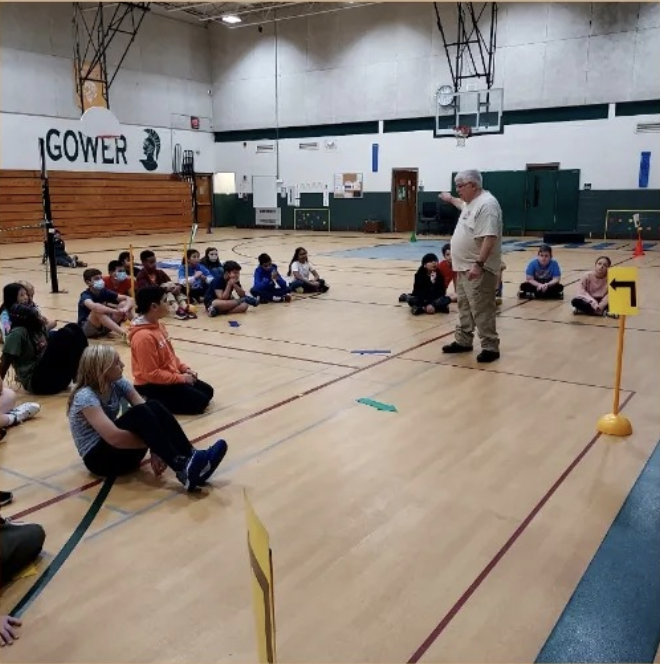
Follow in a WWII Hero’s Footsteps
Kids are often told to imagine what it would be like to walk in someone else’s footsteps. Thanks to this unique PE program, students now have the chance to walk in the footsteps of a senior war hero. Learn more about these veterans through their words and period news footage. Discover how teachers and students can track the miles they walk (or run) throughout the year and compare it to those traveled by these honored veterans.
Boot Camp PE Project
Discover how PE teachers can create a fun and engaging experience for students as they learn about the draft and the different branches of the military, all while getting in shape. Students can compete against one another and against branches to see who can accumulate the most points. Each branch competes in four different tests. The team with the most points wins.
Teachers are given materials and a structure to follow for the challenge.
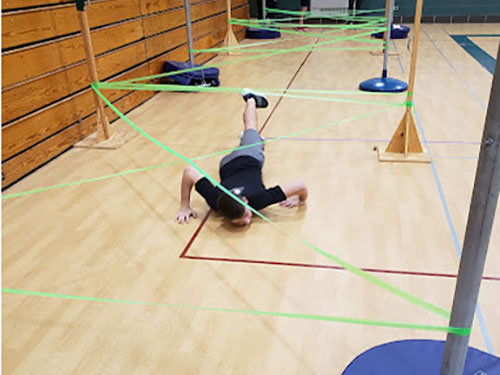
Recommended Book List
The Operation Education volunteer team is working on a curated list of recommended books to teach students about veterans and the realities they faced during their service. We hope you will help by adding books that have had an impact on you and your students.


